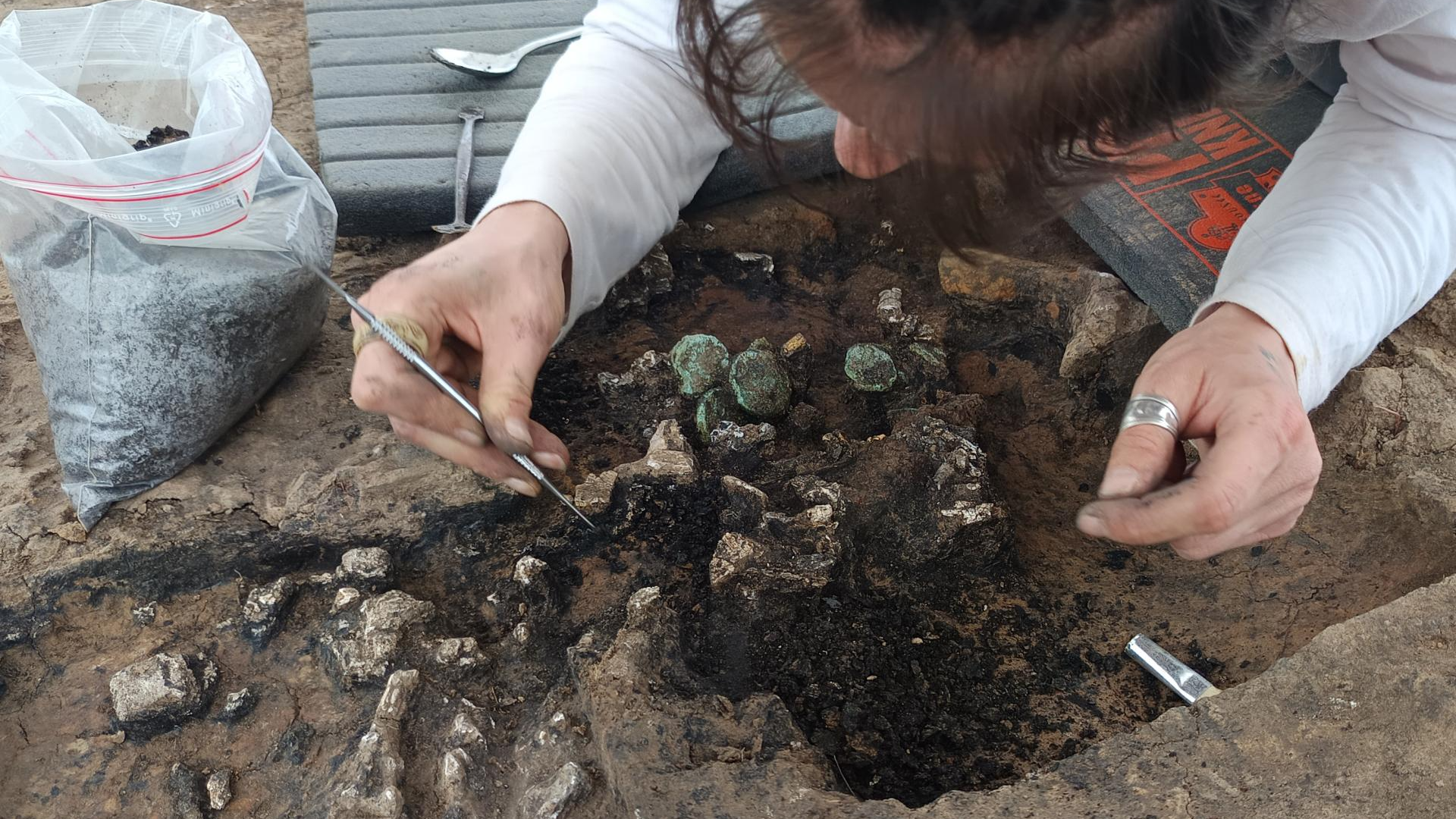Thousands of bumblebee catfish captured climbing waterfall in never-before-seen footage
Scientists don't know much about the rare bumblebee catfish, native to the rivers of Brazil. One research team was lucky enough to observe thousands of them climbing to scale a waterfall, probably to find opportunities to mate.
Never-before-seen footage has captured thousands of catfish climbing a waterfall in southern Brazil — the first detailed observation of the species migrating.
Bumblebee catfish (Rhyacoglanis paranesis) get their name from the black spots on their orange bodies and their tiny size, with the fish reaching just 3.5 inches (89.2 millimeters) in length. The small jumping fish were filmed scaling slippery rocks between 3.3 and 13.1 feet (1 to 4 meters) high behind a waterfall on the Aquidauana River.
Scientists know virtually nothing about this rare fish species' behavior. But in 2024, members of the Environmental Military Police from Brazil’s Mato Grosso do Sul State noticed the spectacle before calling in a team of scientists to document it. Their findings were published Aug. 8 in the Journal of Fish Biology.
The genus Rhyacoglanis encompasses nine species of small catfish that live throughout the Amazon, Orinoco, and La Plata river basins. "[This genus] is rarely collected and even less frequently observed," Manoela Marinho, a biologist at the Federal University of Mato Grosso do Sul in Brazil and first author of the new study, told Live Science in an email. "That's why the large aggregation we reported is so remarkable, as there had been no prior indication that such behavior was part of this genus's natural history."
In the new paper, the scientists report that the bumblebee catfish only climbed later in the day: in the hotter afternoons the fish found shade under rocks. But at around 6 p.m. local time, as the sun was setting, thousands of them began their ascent.
Starting in small pools connected to the river, the catfish jumped up steep and vertical stretches of rock. On flat rocks, there were so many fish that they were seen climbing on top of each other. In their climbing frenzy, some of the catfish even clambered up the scientists' plastic bucket.
Related: Gigantic, 9.4-foot-long catfish is the largest ever caught
Get the world’s most fascinating discoveries delivered straight to your inbox.
The catfish climbed by keeping their fins straight, and using side-to-side rocking and tail-flipping motions to propel themselves forward. The scientists also speculate the fish might create a suction mechanism to stick to rocks as they climb by forming a small cavity between the body and the rock — a strategy shared by some other fast-flowing river fish like stream loaches and Andean climbing catfishes.
The research team doesn't know why the catfish were climbing the waterfall, but they suspect they were migrating upstream to reproduce. The climbing group included males and females, most of them adults. This behavior also began in November, the start of the rainy season, after a particularly dry winter.
"All the signs point to this being a reproductive gathering," said Marinho. "It happened right after a long and severe drought in the region, and the sudden rise in water levels seems to have triggered the species to spawn, bringing together a massive concentration of fish that had never been seen before."
Small fish migration behavior is poorly understood in Brazilian rivers, according to the researchers, because most studies focus on larger fish species important to the fishing industry. The lack of information on smaller fish species in the region could also be because migrations occur quickly and under very particular environmental conditions, making them easy for scientists to miss.
The discovery shows how important river habitats are to small fishes' life cycles, according to the researchers, in light of river damming projects that threaten to fragment Brazilian river habitats and hinder fish migration.
"Recording and sharing this type of behavior…underscores the need to preserve natural habitats, especially fast-flowing streams," Marinho said. "These habitats are often submerged by hydroelectric reservoirs, causing species adapted to these environments to disappear entirely."

Olivia Ferrari is a New York City-based freelance journalist with a background in research and science communication. Olivia has lived and worked in the U.K., Costa Rica, Panama and Colombia. Her writing focuses on wildlife, environmental justice, climate change, and social science.
You must confirm your public display name before commenting
Please logout and then login again, you will then be prompted to enter your display name.
